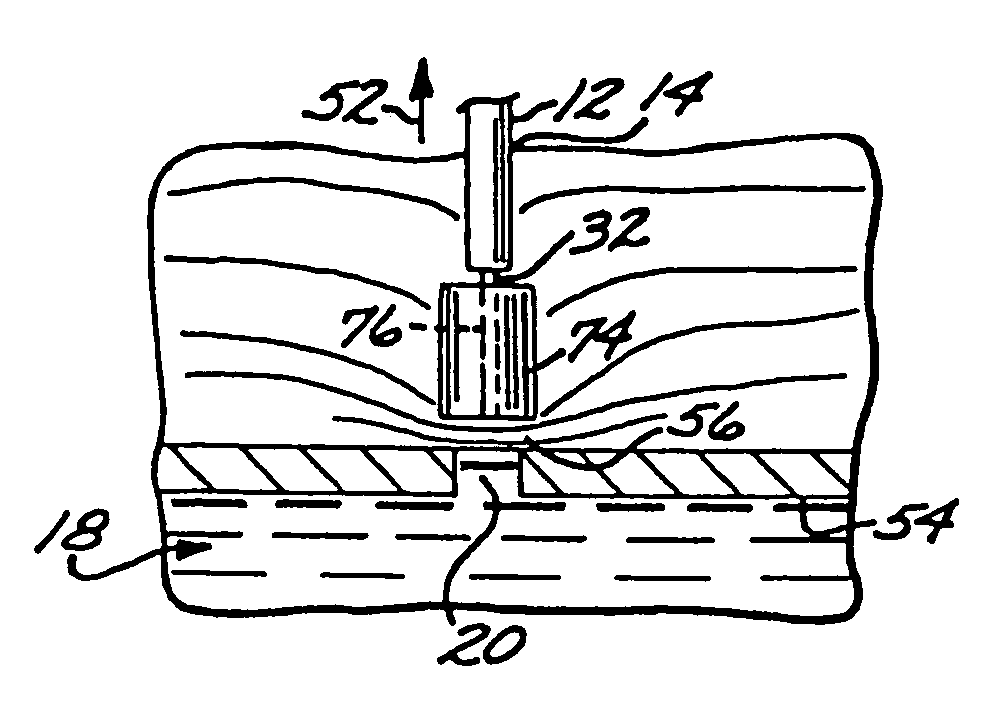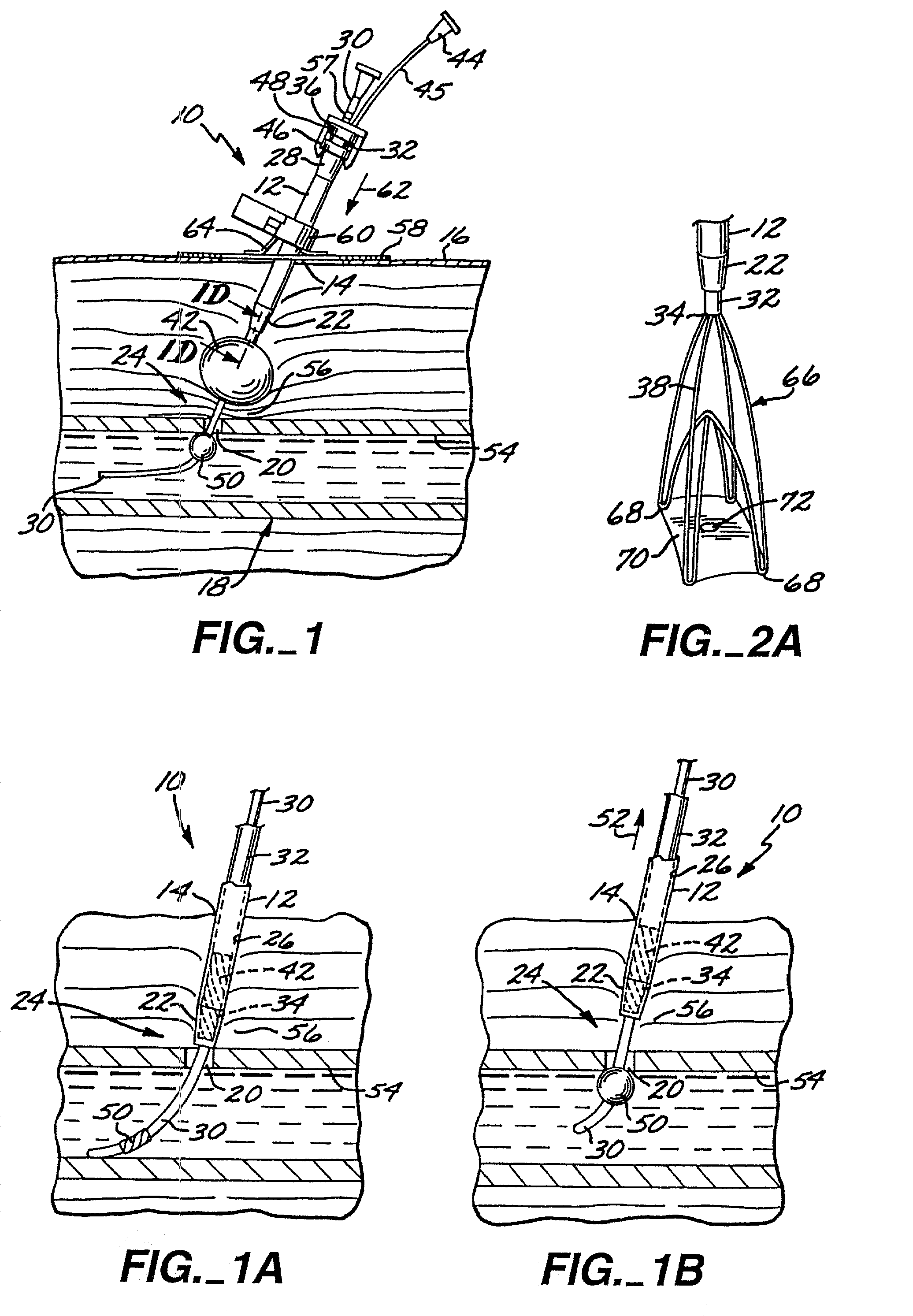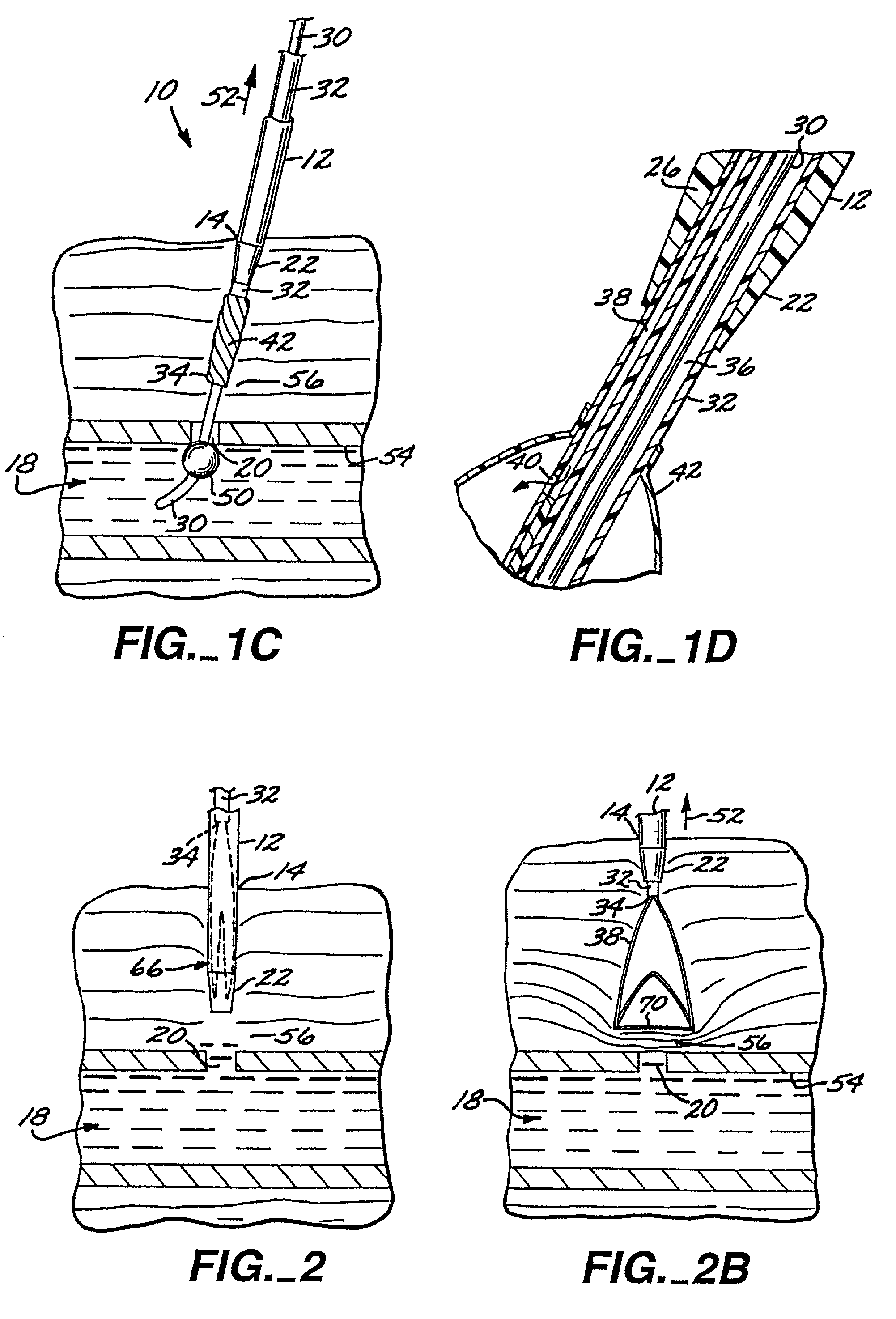Apparatus and method for percutaneous sealing of blood vessel punctures
a blood vessel and percutaneous sealing technology, applied in applications, veterinary instruments, catheter, etc., can solve the problems of external pressure devices, hematoma risk, impaired patient comfort and practitioner efficiency, etc., to facilitate possible reentry, reduce instrumentation change time, and adequate hemostatic pressure
- Summary
- Abstract
- Description
- Claims
- Application Information
AI Technical Summary
Benefits of technology
Problems solved by technology
Method used
Image
Examples
third embodiment
[0082]the method, following steps substantially identical to the above described procedures, involves the use of the compressible foam pad 74 shown in FIGS. 3 and 3A as the compression element at the distal end 34 of the catheter 32.
[0083]In this third embodiment, when the catheter 32 is in the preferred location as shown in FIG. 3, the introducer 12 is moved from its first or distal position to its second or proximal position (in the direction of the arrow 52) to uncover the foam pad 74, allowing it to expand, as illustrated in FIG. 3A. The expanded foam pad 74 exerts hemostatic pressure upon the fatty tissue layer 56, as described previously. The locator tube (not shown) passes through and is withdrawn from the pad channel 76 formed axially in the foam pad 74. If deemed desirable by the practitioner, a coagulant agent such as collagen, thrombin or protamine may be delivered to the vicinity of the puncture site through the pad channel 76 which communicates with the catheter axial l...
first embodiment
[0089]Still another method of the invention is illustrated in FIG. 5, wherein the apparatus 110 differs from the apparatus 10 in that the introducer 112 and the catheter 132 are not luer-locked together. FIG. 5 shows the position of the catheter 132 aligned with a visible marker band 57 on the locator tube 30, just as in the first embodiment described above. It will be readily understood that the method of this “luerless” apparatus 110 may be equally utilized with the guidewire 78 as with the locator tube 30 for the compression balloon embodiment of this invention.
[0090]When the preferred location of the expanded compression balloon 42 has been achieved as shown in FIG. 5, by applying either the guidewire or the locator tube methods previously explained, force must be applied from above to the compression balloon 42 to maintain hemostatic pressure on the fatty tissue layer 56. The practitioner advances the introducer 112 downward in the direction of the arrow 62 until the introducer...
PUM
 Login to View More
Login to View More Abstract
Description
Claims
Application Information
 Login to View More
Login to View More - R&D
- Intellectual Property
- Life Sciences
- Materials
- Tech Scout
- Unparalleled Data Quality
- Higher Quality Content
- 60% Fewer Hallucinations
Browse by: Latest US Patents, China's latest patents, Technical Efficacy Thesaurus, Application Domain, Technology Topic, Popular Technical Reports.
© 2025 PatSnap. All rights reserved.Legal|Privacy policy|Modern Slavery Act Transparency Statement|Sitemap|About US| Contact US: help@patsnap.com



